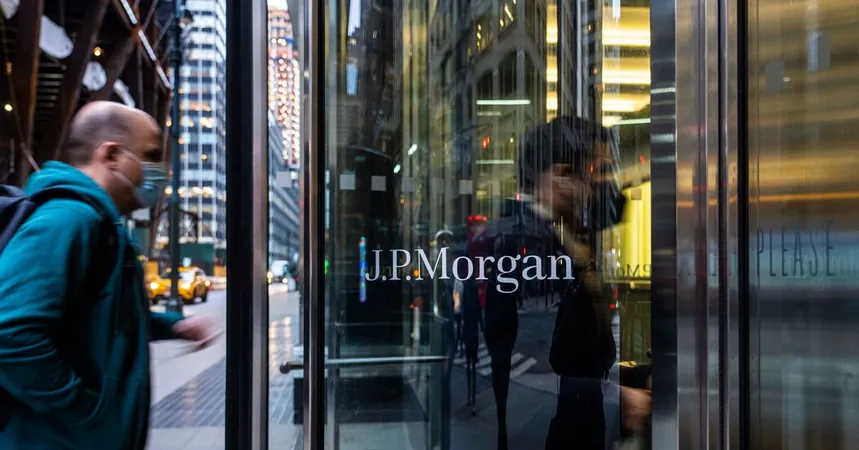
The Battle for the Office: C.E.O.s and Trump Push Workers Back to In-Person Work
2025-01-21
Author: Jia
Introduction
As the pandemic recedes into memory, employees find themselves caught in a familiar pattern: executives announce ambitious return-to-office plans, only for them to be delayed again and again. But recent months have seen a resurgence in urgency about bringing workers back to physical office spaces.
Trump's Executive Order
In a significant and controversial move, President Trump recently signed an executive order mandating that federal department heads terminate remote work arrangements and require federal employees to return to the office five days a week. He previously warned that those who resisted this directive would be faced with termination. This move has reignited the debate surrounding remote work and has emphasized the increasing pressure on companies to bring their returns to normalcy.
Corporate Policies
Major corporations like Amazon, JPMorgan Chase, and AT&T are also making headlines by enforcing strict return-to-office policies. Amazon, which had previously allowed a hybrid schedule, has pushed for a full return to the office—citing the advantages of employee collaboration and a stronger company culture. In a memo, CEO Andy Jassy argued that being present together fosters innovation and deeper connections among employees.
Cultural Shift
Interestingly, the culture around workspaces is shifting in popular media, with shows like “Severance” examining psychological dynamics in the office and songs celebrating professional life. This cultural shift is helping normalize the re-emergence of in-person work and is adding to the broader narrative of workplace reformation.
Worker Resistance
While some workers, like marketing manager Ellen Harwick, have found joy in returning to a bustling office environment, the resistance to these mandates is palpable. Advocates for remote work highlight the difficulty of balancing family responsibilities with rigid, nine-to-five schedules. Sara Mauskopf, CEO of Winnie, a childcare startup, pointed out that finding childcare that aligns with corporate expectations remains a challenge for many, especially since the pandemic has reshaped family dynamics and work-life balance expectations.
Current Trends
Despite the pressure from large firms, data from a Stanford project shows that around a quarter of all paid workdays in the U.S. are still conducted remotely. A significant number of employees are unwilling to return entirely to in-person work; many have expressed that a lack of flexibility could drive them to seek new opportunities. Recent protests by Amazon employees in favor of remote work highlight ongoing discontent around forced returns, showing that while some embrace the return, many are still fighting for flexibility.
Hybrid Models
Interestingly, while the effort to return to office work has gained momentum, hybrid work models continue to thrive as organizations like TIAA commit to flexibility, reinforcing employee satisfaction and productivity. Notably, companies like Yelp have transitioned to fully remote operations after experiencing positive business outcomes, contesting the narrative that in-person environments are superior for success.
Real Estate Outlook
Commercial real estate sectors remain cautiously optimistic with the push for office occupancy, showing signs of gradual recovery. Current occupancy rates stand just above 50% of pre-pandemic levels, according to Kastle, and real estate experts believe growing demand for office space might be on the horizon as large corporations push their employees back to the office.
Conclusion
In conclusion, as President Trump and major corporations advocate for a full return to office life, it’s clear the push toward in-person work is about more than just productivity—it’s about shaping the future of corporate culture and employee expectations. While some embrace returning to their cubicles and conference rooms, a significant faction continues to demand the flexibility of remote work. The coming months will undoubtedly reveal the lasting impact of this cultural tug-of-war on the workforce and the economy at large.




 Brasil (PT)
Brasil (PT)
 Canada (EN)
Canada (EN)
 Chile (ES)
Chile (ES)
 Česko (CS)
Česko (CS)
 대한민국 (KO)
대한민국 (KO)
 España (ES)
España (ES)
 France (FR)
France (FR)
 Hong Kong (EN)
Hong Kong (EN)
 Italia (IT)
Italia (IT)
 日本 (JA)
日本 (JA)
 Magyarország (HU)
Magyarország (HU)
 Norge (NO)
Norge (NO)
 Polska (PL)
Polska (PL)
 Schweiz (DE)
Schweiz (DE)
 Singapore (EN)
Singapore (EN)
 Sverige (SV)
Sverige (SV)
 Suomi (FI)
Suomi (FI)
 Türkiye (TR)
Türkiye (TR)
 الإمارات العربية المتحدة (AR)
الإمارات العربية المتحدة (AR)